Rhipsalis is a cactus that grows in trees in the rainforests of Brazil and other South American countries, so it is an epiphyte, one that supports itself in the crooks of branches of trees in rainforests. Unlike a parasitic plant that takes its nutrients and moisture from the host tree, an epiphytic plant does not affect the host and derives what it need to survive from the air, rain, and debris that collects around it as it perches there in the tree.
Rhipsalis also has the distinction of being the only genus in the family of cactus that can be found in the Old World, in isolated parts of Africa and Asia; all other cactus are native to the New World.
Some rhipsalis have undergone a name change; the first one I added to my collection I bought as a rhipsalis; some are now said to be in the genus Hatoria. So I have this one identified as Hatoria salicornioides. I can’t give you all the reasons or the science behind the name change; I just kind of group them all together.
The plant’s fullness has had some ups and downs, but it always makes nice little yellow flowers.
Sometime later I realized a plant I had bought long ago, back when I failed to hold onto the ID tags, was also a rhipsalis. It had been covered up by another succulent that grew faster over the years. So I rooted some cuttings and let it grow in its own pot, a Rhipsalis mesembryanthemoides.
It has a totally different growth pattern and slightly larger white flowers.
Look at the stems in both these pictures. At first I wasn’t sure what function those stems played in the plant; as I watched the plant as it grew, I discovered that’s where the leaves formed! Over time the stem will be covered with the short green leaves you see on the stem with the flowers.
Then in 2021 I purchased another one for sale in the Huntington Gardens offerings in the CSSA journal, a Hatoria salicornioides fa. Bambusoides. This one is more similar to my first one and also has yellow flowers, but it grows in a more upright form.
Because this one grows more upright, it will stay in its pot. The other two may get replanted in a hanging basket so they can trail down like they do in those trees where they live in Brazil.
This little pot of cuttings of the H. salicornioides has filled out nicely, but is not quite old enough to bloom yet.
At any rate, even in our dry, dusty, arid climate, they all seem happy, so I may continue to give them a bit more water than my other cactus and enjoy them as they are.
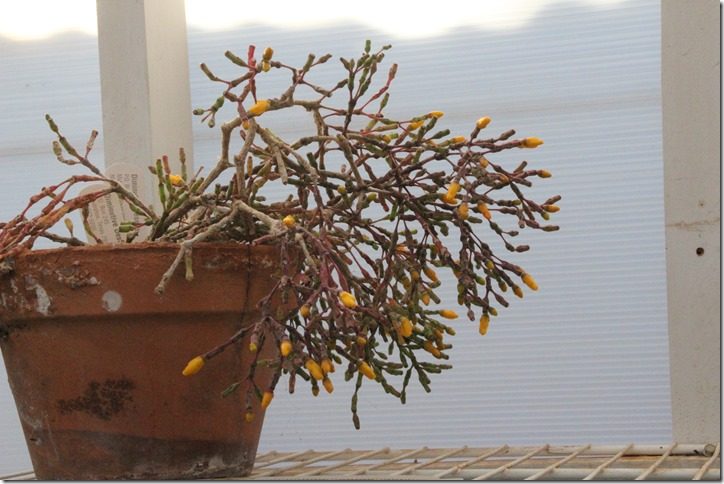
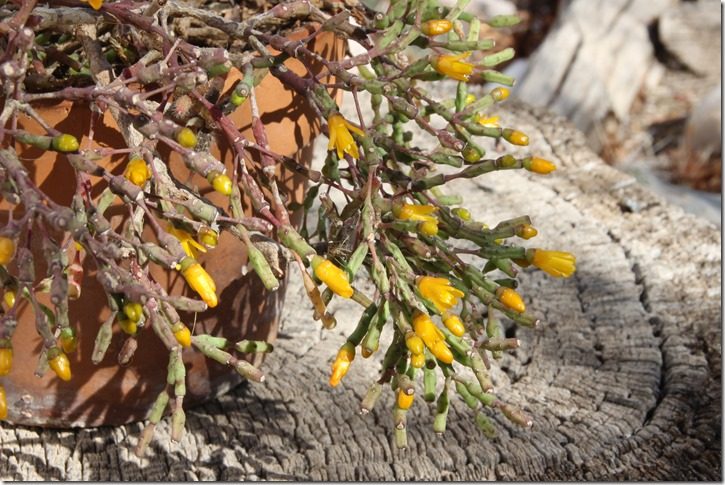
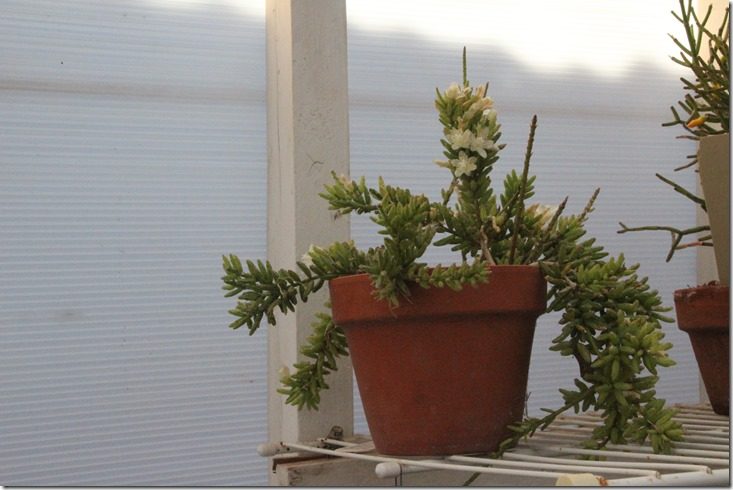
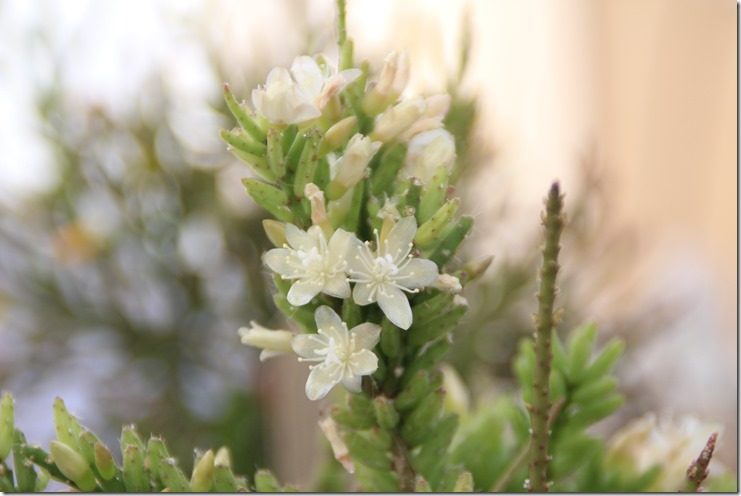
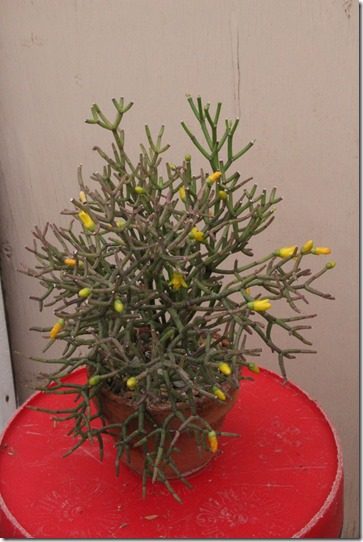
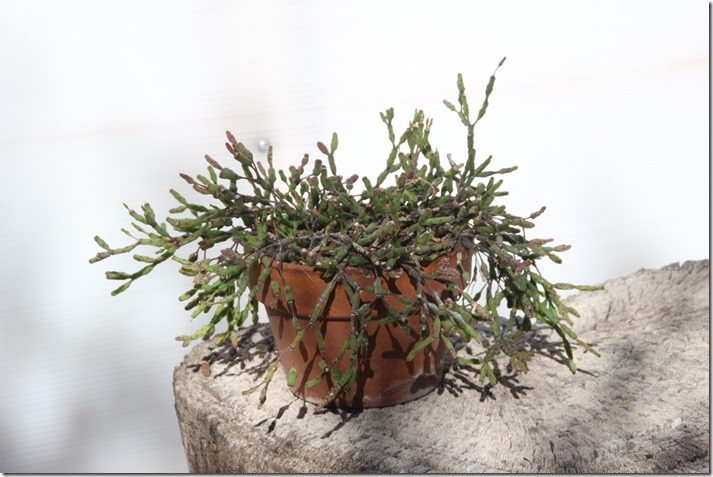
Recent Comments